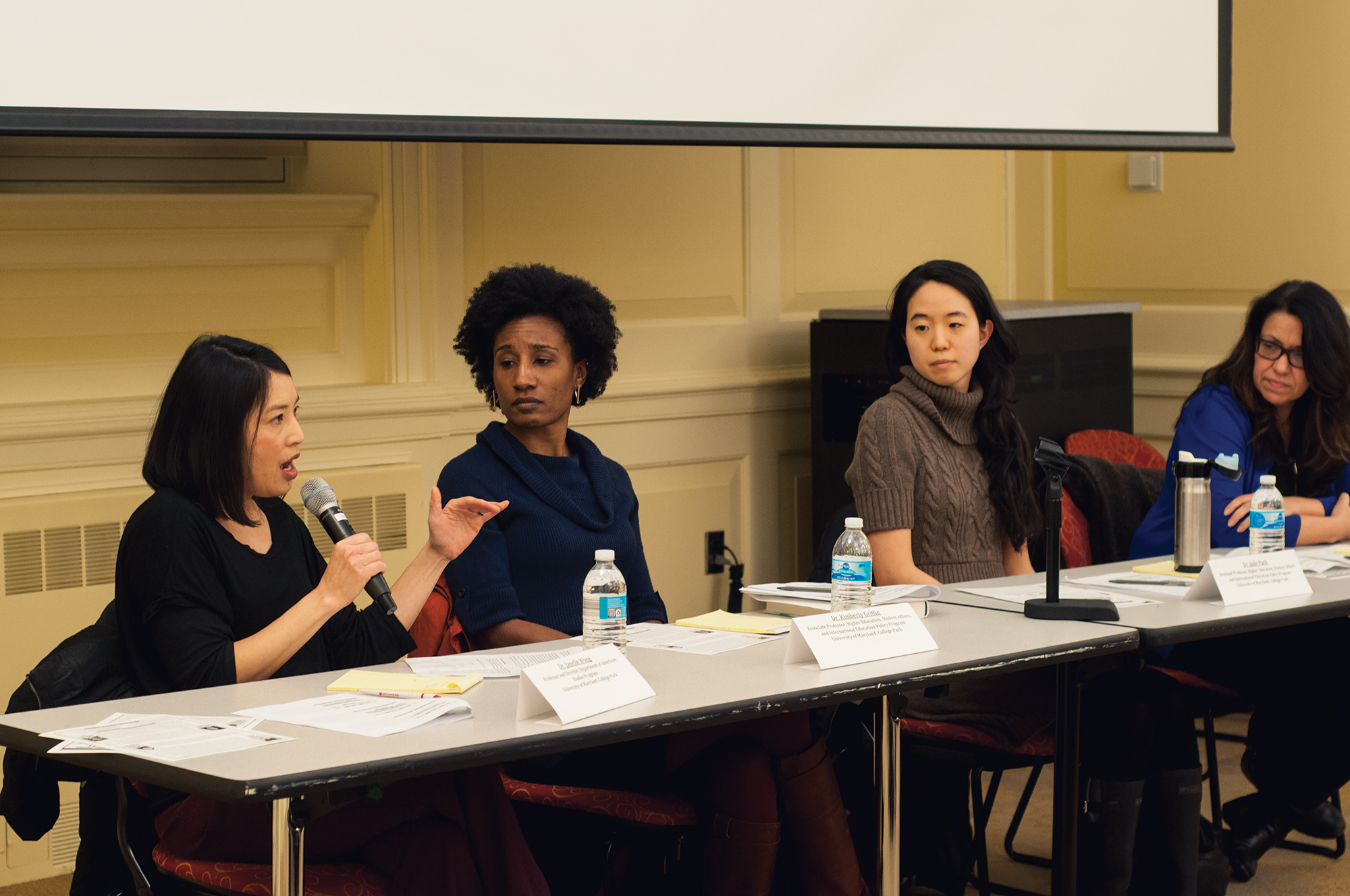Javon Goard, a senior sociology major, said if the University of Maryland had not implemented affirmative action, he might not be here.
“It takes certain actions such as affirmative action to push things along,” Goard said. “If affirmative action did not exist, programs that would benefit the underrepresented community at UMD would not allow me to be here.”
Four university professors hosted a discussion Tuesday night to discuss affirmative action and what it means for underrepresented students. The panel took place in the special events room on the sixth floor of McKeldin Library in front of about 60 people.
The education college hosted the discussion to inform the audience about the impact of affirmative action, said Nana Brantuo, vice president of the education college’s Graduate Student Organization.
“We wanted to expand the students’ and administration’s knowledge on affirmative action and how it affects underrepresented students,” said Brantuo, a doctoral student studying minority and urban education. “This is not an isolated issue; this is a country issue.”
One popular topic at the event was the present and future state of affirmative action at this university.
“Maryland has a done a lot of good things to increase diversity,” said Julie Park, a professor in the student affairs concentration. “Affirmative action is the necessary tool kit we need. Without it we would not be as diverse as we are.”
However, others brought up concerns that the university still has racial problems to solve, including the underrepresentation of black students in the student body.
“In the state of Maryland, 30 percent of the population is black,” said Janelle Wong, director of the Asian-American studies program. “Less than 15 percent of the population at UMD is black.”
The panel also brought up topics such as the origins of affirmative action in the United States as a way to guarantee rights for women and minorities, as well as how the media affect public opinion on affirmative action, sometimes negatively.
The professors argued the university should do more to attract students from the surrounding county.
“A lot of students from P.G. County are not being educated here at UMD,” Wong said. “Instead, these students who have great potential are going to other universities such as Bowie State and community colleges to get their education.”
Michael Robinson, the admissions office’s associate director of admissions and diversity initiatives, said the university does represent a diverse group. The admissions office looks at 26 factors in its holistic admissions review, he said.
“We look at race, gender, socioeconomic status and other factors,” Robinson said. “We are a flagship university, so we do not want to accept applicants just because they are a legacy applicant. We look at all factors in order to accept students.”
Robinson said he would stay at this university until he retires because he enjoys the diversity of the campus.
“I smile when I see students of diverse backgrounds walk around the campus,” Robinson said. “Maryland has a very diverse population.”



